I’m often surprised and impressed by the dexterity and athleticism of larger raptors as they take off through a maze of tree branches or other obstructions.
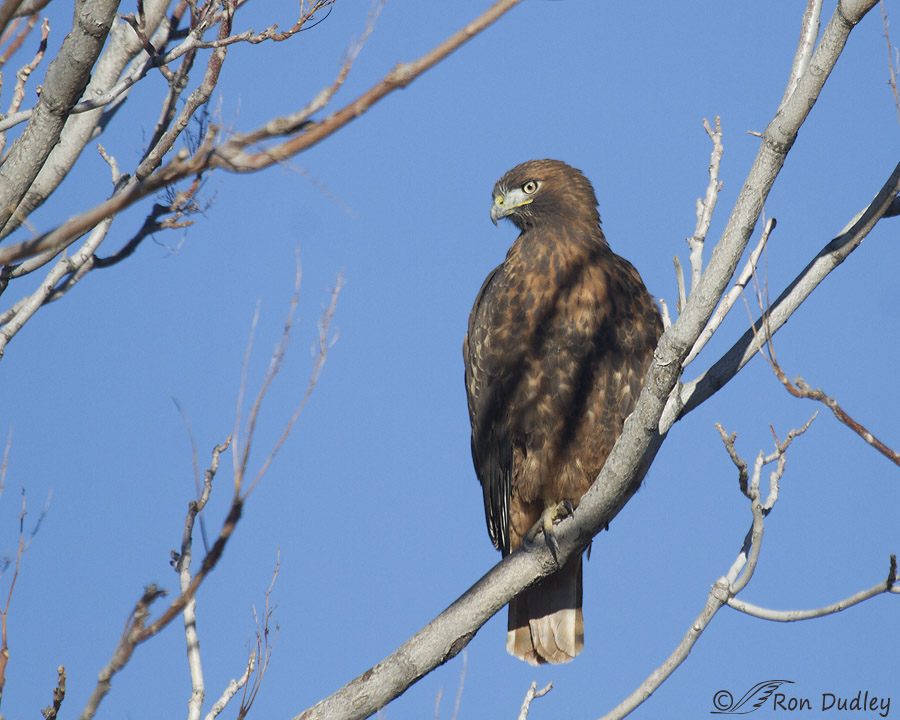
1/2000, f/6.3, ISO 500, Canon 7D, Canon 100-400 @ 400mm, not baited, set up or called in
I photographed this dark morph Red-tailed Hawk last week at Farmington Bay as it rested on an habitual perch. Usually when raptors take off from this very spot they turn around first and fly away from me through the open space you see behind the bird but this time it surprised me…
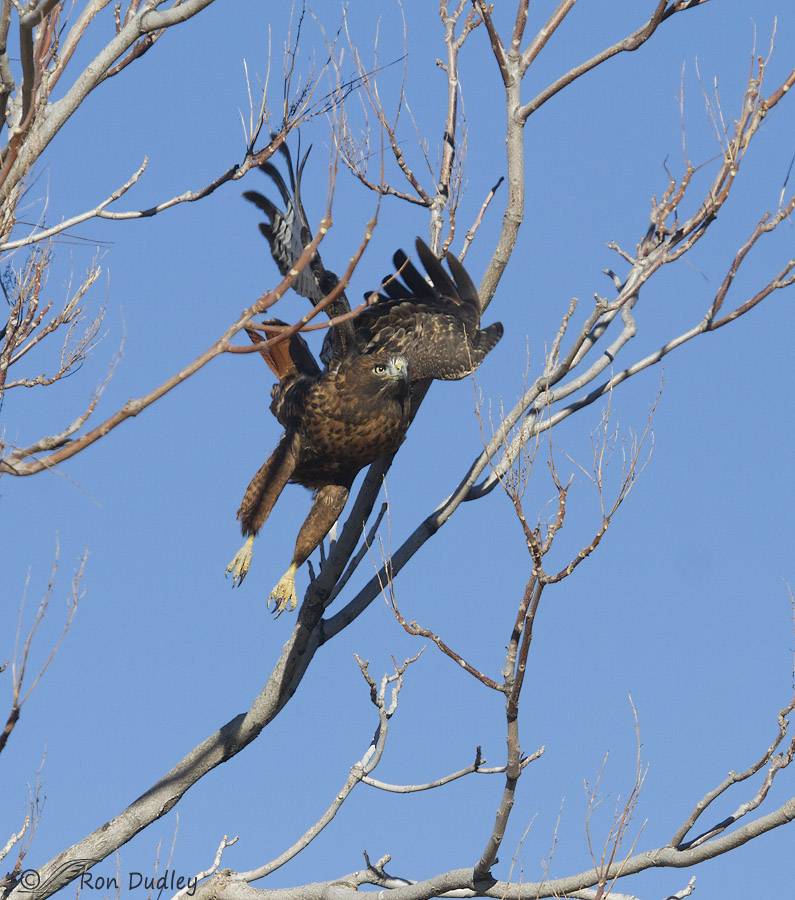
1/2500, f/5.6, ISO 500, Canon 7D, Canon 100-400 @ 250mm, not baited, set up or called in
by launching mostly in my direction where it had to negotiate a variety of branches and twigs before breaking out into the open. Here it is about to pass through the diagonal open space created by the two branches running from lower left to upper right.
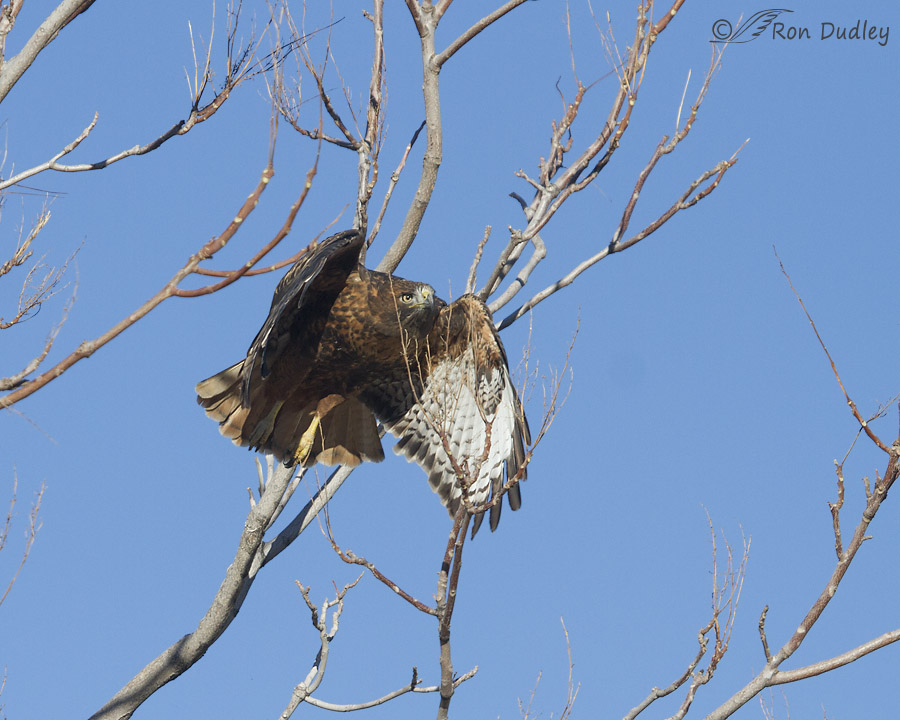
1/2500, f/5.6, ISO 500, Canon 7D, Canon 100-400 @ 250mm, not baited, set up or called in
It did so by making sure its wings were close to its body when it went through that space. Next it had to negotiate the jumble of vertical twigs just in front of and slightly below its face. Here it used some creativity…
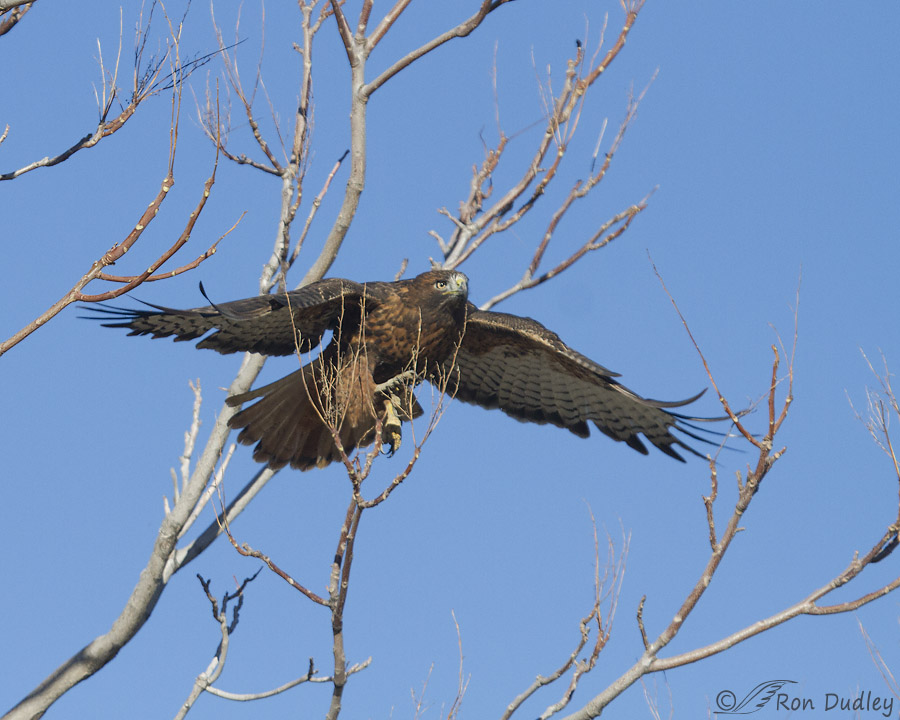
1/2500, f/5.6, ISO 500, Canon 7D, Canon 100-400 @ 250mm, not baited, set up or called in
by bringing its right foot forward and using it to grasp some of those twigs and push them out of the way as it passed by. I suspect this also might have given the bird some extra lift as it pushed off.
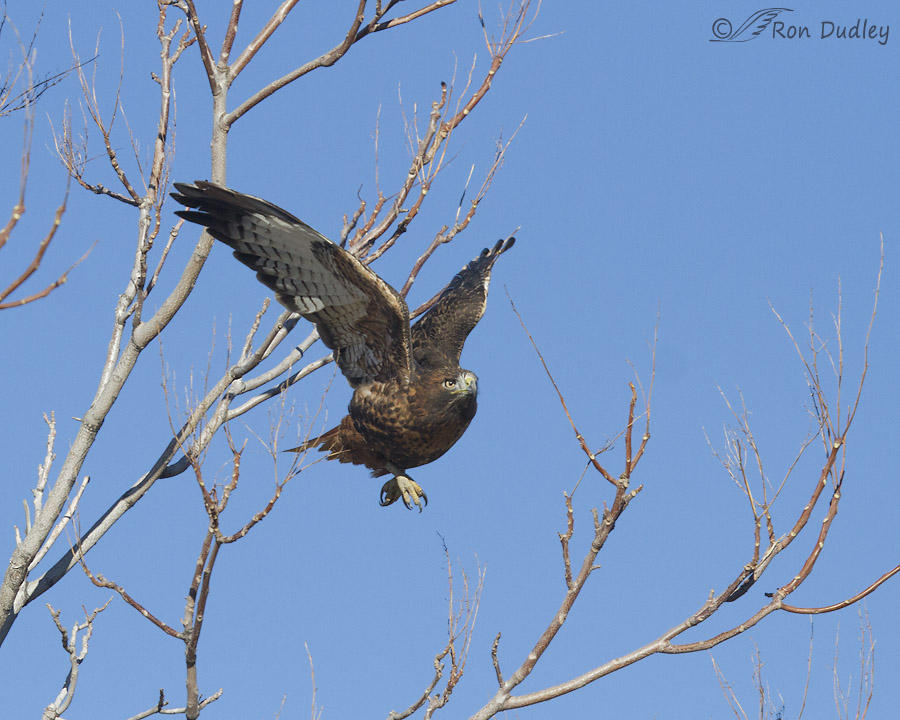
1/2500, f/5.6, ISO 500, Canon 7D, Canon 100-400 @ 250mm, not baited, set up or called in
Notice that both wings are conveniently in the perfect position at precisely the best moment to clear the twigs on both the left and the right.
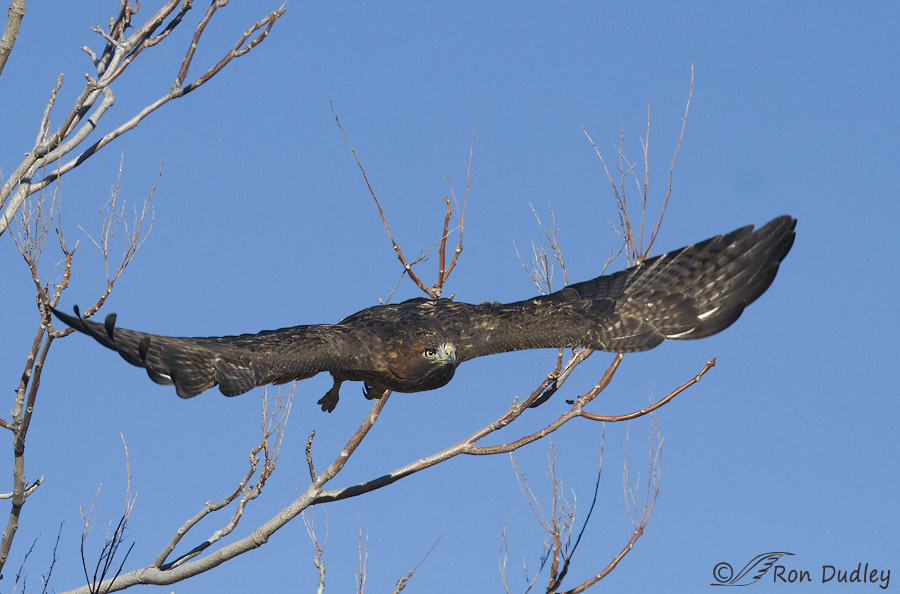
1/2500, f/5.6, ISO 500, Canon 7D, Canon 100-400 @ 250mm, not baited, set up or called in
As soon as the bird broke into the clear its wings went horizontal…
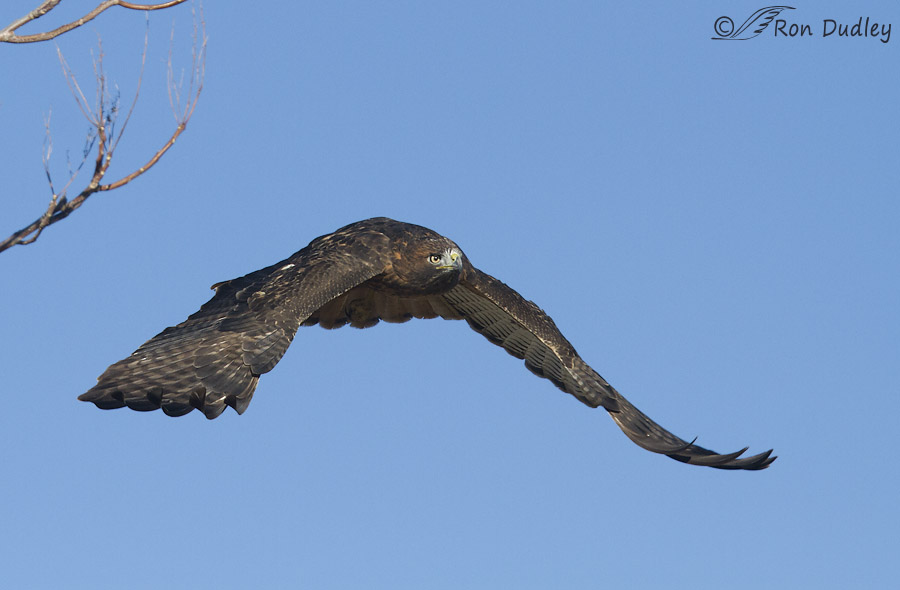
1/2500, f/5.6, ISO 500, Canon 7D, Canon 100-400 @ 250mm, not baited, set up or called in
and the hawk continued on its way unobstructed.
I often see larger raptors that appear to be looking around and planning their escape from perches like this one but I’m not sure whether actual step by step planning is occurring or not. Perhaps there’s little or no planning involved and they simply rely on instinct, athleticism and incredible reaction time and reflexes to negotiate the obstacles as they approach them.
Either way, I’m suitably impressed.
Ron


It’s amazing to watch that process when you stop and think how relatively large these raptors are! Superb sequence of images showing this bird’s dexterity!
Power, grace, style. Which my ever klutzy self watches in awe. And more than a little jealousy.
An amazing series – thank you.
“And more than a little jealousy.”
I’m like that too, Elephant’s Child. I often think “Wow, wish I could do that!”
Cannot think of a thing to add to all these compliments from your other readers, other than thanks for these exceptional photos.
Thanks very much, Chris.
Evil iPad is mocking me, echoing what I say(this is why I have problems)…
Not to worry, Patty. I fixed it…
I’d still be picking twigs out of my feathers. That was pretty amazing.
So would I, Arwen. I’d probably also have bruised wings and an eye injury from the twigs. Thank you.
Wings are what we usually watch in a launch , but in shot #2, you’ve fully captured the power that the hawks legs bring–impressive !
Interesting observation, Kris. I think those legs were even more “hyperextended” than usual this time.
The ability to negotiate their way through obstacles that wildlife demonstrates always impresses me…I even see it in my dogs…as they carefully thread their way over each others sleeping bodies and through the tangle of legs…they don’t even seem to look, much less plan, yet they never step on each other…I wish I could do that…
I’ve seen the same thing with canids, Patty
A good discussion of Harlan’s Hawk can be found online at https://www.aba.org/birding/v42n2p30.pdf
Red-tailed Hawks are highly variable in plumage and it is often very difficult to identy sub-species with certainty.
Dan, I’ve tried to do better at ID of Red-tail plumages, partly using the work of my friend Jerry Liquori but I apparently don’t have a natural knack for it because it’s slower going for me than it should be. Thank you for the link.
I’m very impressed with both the bird’s athleticism and with the way you were able to capture this take off. I think my favorite of these shots is #5 because I love the position of the feet.
Thanks, Susan. That foot position is unusual for that stage of take-off. It’s a “leftover” from having just grasped those twigs with that foot.
Simply amazing and sensational series Ron!
Charlotte
Thank you, Charlotte.
Incredibly interesting dark morph Harlan’s Red-tail that you captured spot on!!
Have never seen a dark morph like this one. Have observed ones that appear to be in between this dark one and what we see as a normal plumaged Red-tail, more rufous, just not as dark in the mid-west.
However, Rough-leggeds is another story, we get both the light and dark morphs here.
Winter is here, down in the 20’s this morning. A Rough-legged has already made an appearance.
Dick, I still haven’t seen my first roughie around here, though others have been reporting a few of them for some time.
How sure are you that this is a Harlan’s? I didn’t think they were ever red but then I don’t know a lot about ID’ing them…
As sure as I can be relative to the field guide. Your hawk looks very similar to the picture on page 144-145 showing a sitting and flying Harlan’s. National Geographic Field Guide, 6th edition, by Dunn and Alderfer.
Since I haven’t seen one that dark I immediately went to my field guide and your hawk seems to have all the visual characters for Harlan’s.
I would love to know what the parents were, what they looked like.
Is the Harlan’s a result of a recessive gene, thus both parents would have to have that allele?
I don’t know, but would love to be investigating those parents, or possible parents. Just my take.
Many thanks for the images!!
Great photos Ron !! I’ve often wondered if the agility that Red-tailed Hawks display–both in securing stable perches and then leaving those perches–has played a role in their evolutionary success. Many factors involved probably, but it could be one.
It certainly could be, Jeff – good point. I also notice (as I suspect you have) the relative clumsiness of young birds compared to more mature Red-tails. It’s fun to watch them learn and develop their agility.